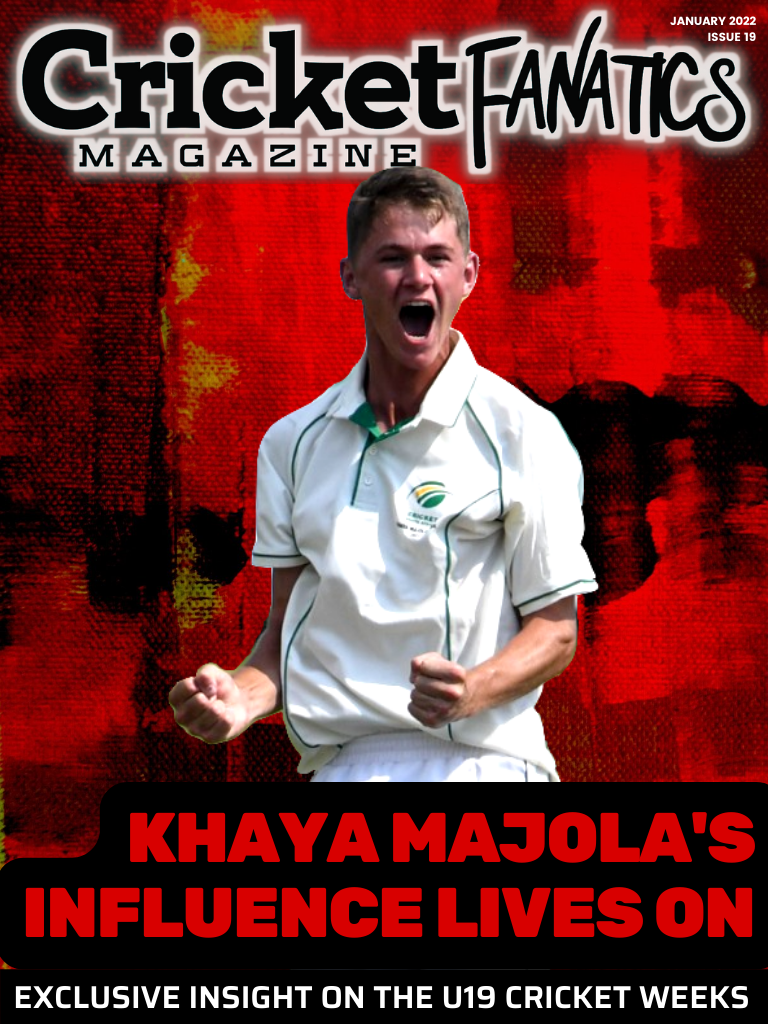
Table of Contents
EDITOR'S NOTE
Khalid Mohidin
Founder and Editor - Cricket Fanatics Magazine
People who know me well will know that I am a strong believer in promoting young players. They are the future of our sport and are the cornerstone of a healthy production line of Proteas players.
To see a young future star take the field is blissful to witness because they play their natural game with no fear and amplified passion.
Identifying these talented players at the beginning of their careers, and seeing them grow into superstars, is fulfilling and an honour. It increases my hope for the prosperity of cricket in South Africa.
As a journalist, I've been blessed to attend Cubs Weeks, Khaya Majola Weeks and Schools Weeks where I get to see these players in action before they start building a name for themselves. This has been an honour and a privilege, to see the pride in these players' eyes when they are selected in SA Schools teams and then from there the SA U19 team.
This made me extra curious about how these weeks are run. Is there a specific structure, plan and goal that feeds into the domestic system?
In this issue, we go on a full journey into the U19 Boys and Girls weeks and uncover how it fits into South Africa's cricket structure.
We give you exclusive insight from the players and coaches so that you can get a better understanding of the effort that has gone into the development of our future stars.
So sit back, grab a beverage and a snack, and enjoy issue 18, the first-ever U19 Weeks edition of Cricket Fanatics Magazine.

BECOME A PATRON
By Khalid Mohidin
Hey, guys! Welcome to Cricket Fanatics Magazine. I would like to welcome you to the first and only fan-driven Cricket publication in South Africa.
I started this venture on 1 July 2019 with a vision to get fans from all walks of life engaged with the game and the personalities in cricket.
We want to tell the untold stories of South African cricket and we want fans to be heard.
Since we started, we covered the Mzansi Super League, Women’s Super League, Proteas Men and Women International Test, ODI and T20I series, as well as school and club cricket, with the aim of providing entertaining, engaging and educational content.
But hasn’t stopped there.
We started a Monthly Magazine where we provide multi-media content, including exclusive features, opinion pieces and analysis.
This works hand-in-hand with our YouTube channel where we produce unique cricket shows that allow fans to call in and have their say.
We have the Daily Show, which reveals all the major talking points in South African cricket.The Sunday Podcast Show where we sit back, relax and engage with the live chat, answering all the questions fans have about us and the game.
We have Off-Side Maidens, the first ever All-Women’s Cricket Show on YouTube, which helps empower women in cricket and gives them a place to share their own views on not only women’s cricket but all cricket.
We have a Legends show, where we interview all legends in cricket.
To produce all of this, we’ve invested a lot of money, time and effort to bring this to you for free.
But to keep this going we need your help. So we have opened a Patreon account.
Today, we are fortunate that technology has enabled anyone to become a patron of creative work, even if they are not a billionaire.
We have therefore launched a campaign for you as a Cricket Fan to become a patron and support us as an independent, bootstrapped publisher.
As a Patron, you also get your voice heard as a Fan.
Plus: You have the opportunity to become more engaged with the content we produce.
Every month we produce at least:
- 60 Website Articles
- 20 Daily Video Shows
- 4 Weekly Podcasts
- Match Previews
- Match Reviews
- Video Interviews
- And more…
So please join our Patreon campaign today.
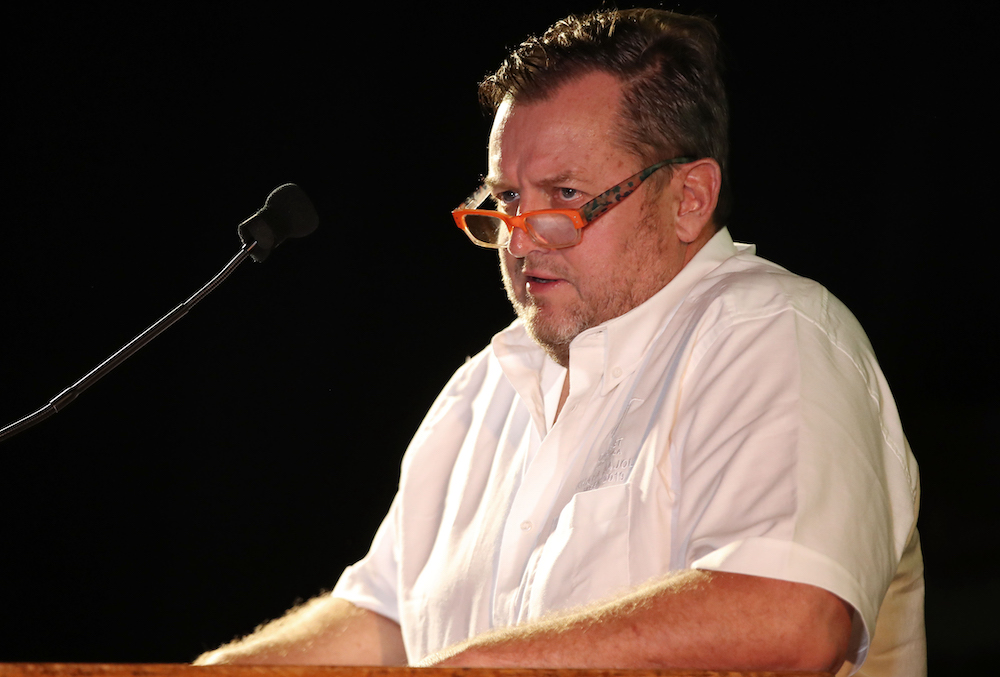
Khaya Majola Week ‘a real springboard’ for young talent
By Marc Jacobson
The Khaya Majola Week serves a vital role in identifying and exposing the stars of tomorrow and provides youngsters with the opportunity to pave their way through the ranks, according to Cricket South Africa (CSA) Youth Manager Niels Momberg.
With the CSA Cubs Week having taken place in January 2022, which showcased the six junior franchises from around the country, the Khaya Majola Week forms the foundation thereof, whereby all the provincial outfits precede and take to the stage.
Due to this, it forms an integral part of SA’s cricketing roots and talent development.
“The Khaya Majola Week is a real springboard for our players to go to the next level,” Momberg told Cricket Fanatics Magazine.
“Adding to that, we must pick six regional sides that go to the national under-19 Cubs Week that takes place in Stellenbosch in January every year. Good performances there lead to even further selection.
“The Khaya Majola Week is also part of our talent acceleration process [where] nominated players [will attend] camps before that to show what they can do, but also players who are not yet part of the structures or identified squads.”
Momberg added that these so-called ‘under-the-radar’ players often “put on big scores and take many wickets” before getting further recognition.
Regarding scouting networks, Momberg said CSA had been implementing an initiative called the Talent Acceleration Programme (TAP), which comprises “lead scouts” from around the country who would stay connected “with all the coaches around the province at youth level”.
This includes the cricket coaches at the various schools and clubs peppered around each province.
“They then pick up which kids are the best and they would go to camps where the national coaches and selectors are present. That’s part of our sifting process,” Momberg said.
“The players get identified from a younger age and then in each province, they go into what we call the academy and Colts system, which is the next tier before fulfilling professional cricket. It’s an ongoing process with ongoing programmes.”
It is for this reason that there aren’t trials in each region per se, but that this continuous identification stream culminates in the youngsters reaching the next level.
“There shouldn’t be trials for that if we do the work correctly by having ongoing programmes and systems like the national weeks, camps and school matches.
“It is a difficult process, but the club systems and universities play a very important role and are important for our pipeline.”
Momberg said CSA do assist the “several tiers” of schools around the country with coaching courses, logistical assistance and structures and by orchestrating various tournaments in which they play.
One of the challenges regarding talent identification could be to pay enough attention to the schools from rural areas or smaller towns, which CSA has remedied by implementing a “hub system”.
“This is where we have a central place surrounded by many schools,” Momberg explained. “Players from those schools who don’t [have access to] facilities and who don’t even play cricket can then go to the hubs.
“The hubs also play in the bigger leagues and we also have a rural U17 tournament that covers the kids from those areas to have a bite at the cherry of playing at a higher youth level.”
He added that U13 and U15 regional tournaments were also introduced in which to create “more opportunities for kids from all areas to play at a higher level”.
For every generation of talent, there needs to be the right coaches who are responsible for harnessing and honing development in a balanced approach.
There are particular procedures that foresee this as well, Momberg noted.
“CSA have a coaching programme called the Coaching Framework Programme so in each age group in every province there are coaches for boys and girls and they are funded by the federation.
“It’s part of a normal process where they’ll apply for positions, get interviewed and such and that’s how they’ll get appointed.
“We then also tap into our bigger system of schoolmasters, school coaches and the like.”
Momberg added that CSA aim to utilize school representatives in their systems “to ensure that people with a knack of knowing and understanding kids are part of the process”.
The respective coaches who form part of the operations are “getting ongoing and regular training on various levels of the game”, Momberg assured.
South Africa U19 Fixtures
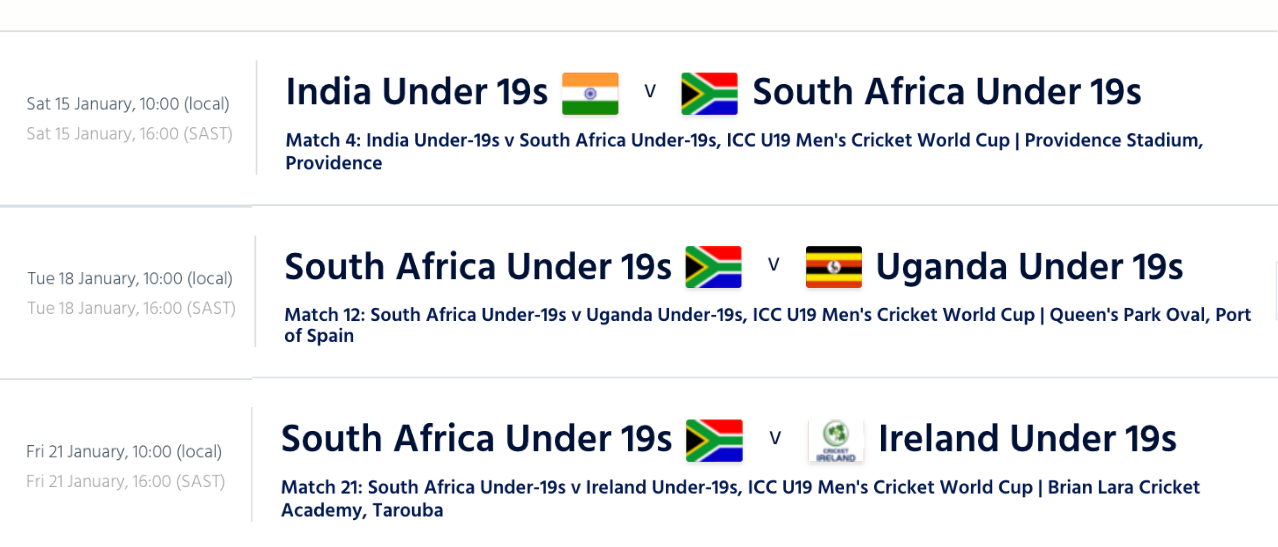
Get More Clients With Cricket Fanatics Magazine
Cricket Fanatics Magazine has the visibility, infrastructure, expertise and toolset to automate your marketing and branding.
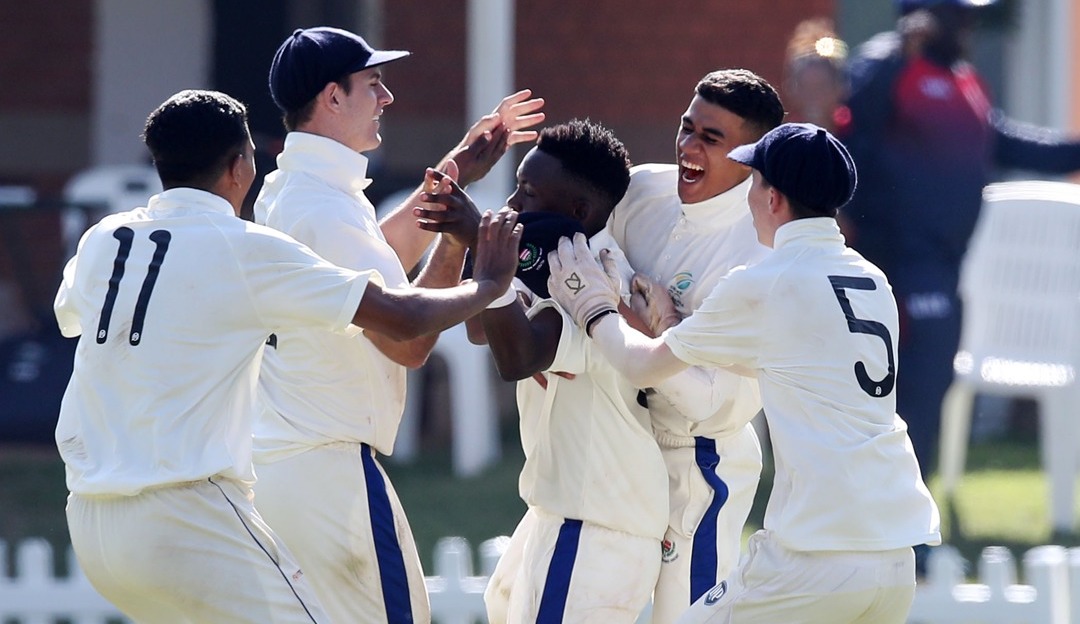
Khaya Majola's influence on Cricket lives on
By Theo Garrun
I’ve been at just about every Khaya Majola cricket week (under its present and former names) since 1989, as I have to all the rugby Craven Weeks in that time.
One of the things about the Craven Week, initially anyway, was that the spirit of Danie Craven loomed large around the place and his influence was seen in the way things were done. Particularly when it came to the really important things – behaviour, sportsmanship and valuing how you play the game above the winning of it.
In 2001, the Coca-Cola Week was renamed the Khaya Majola Week, following Khaya Majola’s death the year before. Khaya’s history as a cricketer in the pre-unity days is well documented in the tournament brochure that is produced each year.
He went on to play an important role in cricket’s unification process that began in 1991 and eventually he and Ali Bacher were the architects of a national development programme for the United Cricket Board of South Africa (UCB), the new national federation.
He later became the Director of Development and then the Director of Amateur Cricket at the UCB.
During that time, he became involved in the then Coca-Cola cricket week as a selector and generally a champion and advocate for the players in the development programme who were beginning to appear in the various teams.
Morgan Pillay, the long-serving tournament director of the week, was very close to Khaya and he gives a lot of credit for the way the tournament has evolved into what it is now to him. “He played a vital role in bringing everyone together, and he did it through the example he set and through the force of his personality,” he said.
“His vision for cricket was clear and he had the ability to get people to buy into it. His dream, he told us, was to see the day when a black South Africa bowler took five wickets in a Test match. Sadly, he died just three months before Makhaya Ntini’s 6/66 against New Zealand in Bloemfontein in November 2000 but I like to think he was smiling down on it.”
Most importantly, Khaya was as adamant that the right things happen on and around the field and, by all accounts, he deserves as much credit for the way things are run at the Khaya Majola Week as Danie Craven gets for the Craven Week.
“You should remember,” Pillay said, “that he was channelling talented black players into the week and many of them had no exposure to this level of cricket before.
"They never grew up with the etiquette and the traditions of the game and they had to be initiated into them. Khaya oversaw that process and he insisted on their compliance with it.
“That’s evident now. We rarely have incidents at the week and very few fingers are pointed, Khaya would approve.”
So, if anyone asks you who Khaya Majola was, tell them he was to school cricket what Danie Craven was to school rugby. He has left deep footprints around here.
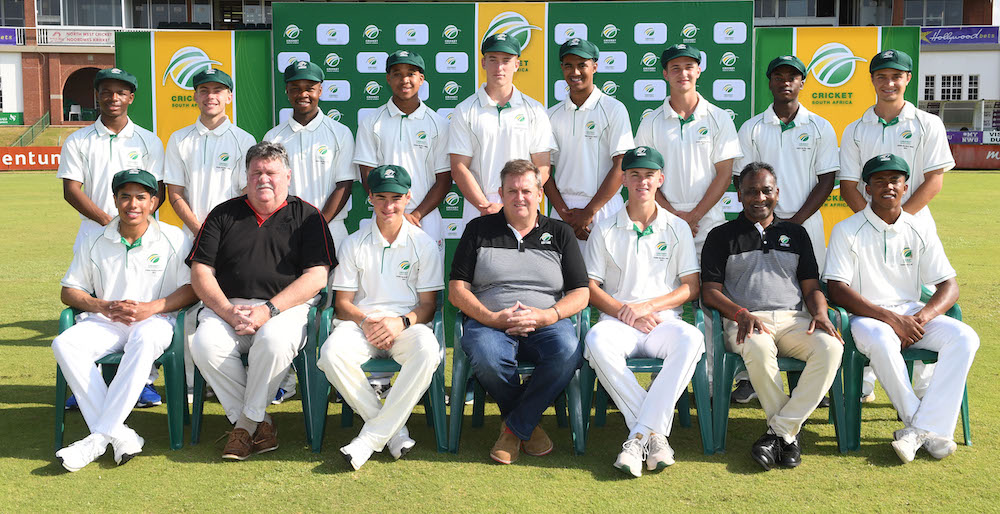
Schalk Engelbrecht of Afrikaanse Hoër Seunskool of Pretoria was announced as the captain of the South African Schools’ side of 2021.
The team was announced at the start of the final day of the Khaya Majola Cricket Week in Potchefstroom by the convenor of selectors, Patrick Moroney.
Engelbrecht is the third player from Affies to captain the national schools’ side. The first was Jacques Rudolph in 1999 before Francois le Clus in 2004.
SACS from Cape Town is the school with the most representatives in the national team with two players, Meeka-eel Prince and Liyema Waqu, getting the nod from the selectors.
The two national sides won’t play any matches this year. The selection panel also picked 13 players per team to receive their caps in 2021. The panel consisted of Moroney, Deon Botes, Graham October, Gregg Hobson, and Burton de Wet.
The captain of Free State, Joe Meyer (St. Andrew’s School), was named the captain of the SA Colts-side. Meyer recorded a century on the fourth day to secure his place in the team. The highest wicket-taker of the week so far, Nicholas Adendorff, also made the Colts-side.
SA Schools & SA Colts Teams for 2021:
SA Schools: Schalk Engelbrecht (Captain) (Affies, Titans), Christiaan Daniels (Menlopark, Titans), Khaya Fakhude (King Edward VII, Lions), Ronan Hermann (Noordheuwel, Titans), Nathan Jacobs (New Orleans, Boland), Bongile Mfunelwa (Rondebosch Boys’ High, Western Province), Meeka-eel Prince (SACS, Western Province), Jesse Prodehl (Wynberg Boys’ High, Western Province), Richard Seletswane (St Stithians College, Lions), Nathan Trevethan (Westville Boys’ High, KwaZulu-Natal), Slade van Staden (Hilton College, KwaZulu-Natal Inland), Alexander Vermeulen (Michaelhouse, KwaZulu-Natal Inland), Liyema Waqu (SACS , Western Province).
SA Colts:
Joe Meyer (Captain) (St. Andrew’s School, Free State), Nicholas Adendorff (Merensky, Limpopo), Abdullah Bayoumy (Newlands Cricket High, Western Province), Basil George (Sao Bras Secondary, South Western Districts), Kyle Glennistor (Northcliff High School, Lions), Olwakhe Goqoza (Victoria Park High, Eastern Province), Juan James (Wynberg Boys’ High, Western Province), JP King (St. John’s College, Lions), Chad Laycock (Glenwood, KwaZulu-Natal), Bathabile Masigo (Die Wilge, North West), Nhlanhla Mashego (Dalpark High School, Easterns), Dewan Marais (Marais Viljoen, Easterns), Shelton Ngobeni (Phalaborwa HUB, Limpopo).
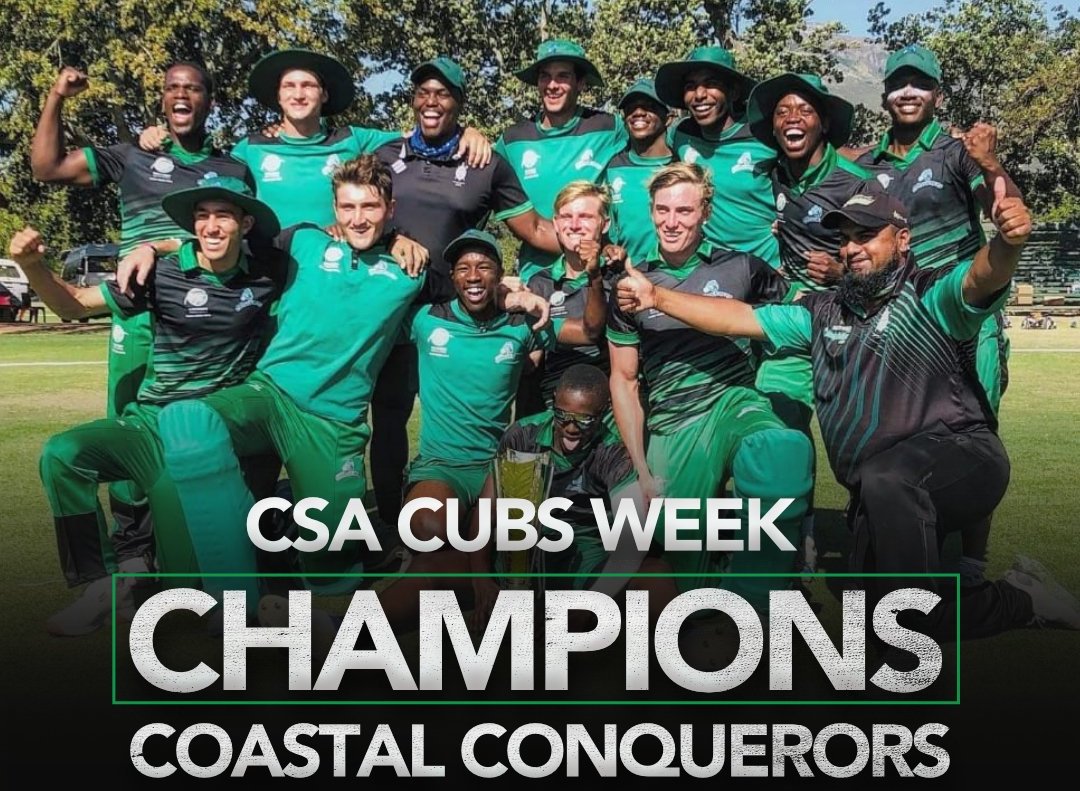
Coastal Conquerors named Cubs Week champions
The Coastal Conquerors is the newly crowned champions of Cricket South Africa’s annual Cubs Week in Stellenbosch on Saturday.
The Conquerors defeated the Eastern Warriors by six wickets on the Coetzenburg Oval to secure the title.
The defending champions, the Southern Superstars (formerly Cape Cobras), watched the match with great interest as they still stood a chance to bag the title after securing a convincing seven-wicket victory over the Central Gladiators to keep their title dreams alive for a bit longer.
The Conqueror's hero was Chad Laycock (111*) who scored an unbeaten century to see his side home. He faced only 78 deliveries in his innings. He dispatched 16 of them past the boundary rope with five of them being maximums.
Laycock and Nathan Trevethan (46*) shared an unbeaten partnership of 168 runs over the fifth wicket. Ntando Zuma (47) and Banele Cele (46) also made valuable contributions to get the Conquerors to 298/4 for the victory. Their partnership over the third wicket was worth 98 runs.
The Warriors batted first and amassed 297/9 in their allotted 50 overs. Their captain, Daniel Ristow (89) and Jean Upman (50) weighed in with half-centuries.
At the start of the final day, five of the six sides could still walk away with the title of champions. The Central Gladiators who finished the week winless were the only team out of contention.
The Gladiators reached 188 against the Superstars thanks to their tail-wagging with contributions from Greg Ford (33*), Tsepho Stafa (29), and Christopher King (27). The team from Gauteng was in trouble when they stumbled to 90/7.
The pick of the Superstars bowling attack was Abdullah Bayoumy (4/33). The Superstars secured the bonus-point victory with Juan James (79*) and Gysbert Wege (74) also playing their part with a 138-run partnership over the third wicket.
The Northern Champions managed to finish their week on a high with a four-wicket victory over the Western Legends. The Legends were restricted to 172 with Hanro Swanepoel (65) and Tshireletso Tikoe (47) making the biggest contributions with the willow.
Letsholo Selemela removed four of the Legends’ batsmen from the crease at the cost of only 34 runs. The captain of the Champions, Schalk Engelbrecht (48*), made sure with his innings that his side would secure the win.
CUBS WEEK 2022 TEAMS:
CENTRAL GLADIATORS
Nkanyiso Mkhize, Dean Bacher, Christopher King, Reuben du Toit, Zack Momberg, Simo Potelwa, Talha Chavoos, Billy van Zyl, Kyle Glennistor, Ravat Yusuf, Tshepo Stafa, Greg Ford, Richard Seletswane
COASTAL CONQUERERS
Banele Cele, Alexander Vermeulen, Romashen Pillay, Jake Carstens, Thabiso Ndlela, Chad Laycock, Nathan Ngugi, Makabongwe Ngcobo, Oyama Ntshona, Nathan Trevethan, Bonga Shezi, Ntando Zuma, Slade van Staden
EASTERN WARRIORS
Siphamandla Bashe, Daniel Ristow, Butsha Mfazwe, Cameron Williams, Ben van der Merwe, Russel Peterson, Casey Keevy, Cormey van der Watt, Ian Baard, Eathan Frosler, Akhona Ratyana, Bune Hlonela, Olwakhe Goqoza
NORTHERN CHAMPIONS
Nathan Steyn, Amaan Khan, Christiaan Daniels, Sinethemba Ngeyane, Letsholo Selemela, Schalk Engelbrecht, William Tshoke, Arnaud du Plessis, Shelton Ngobeni, Modise Maloka, Christiaan du Toit, Khaif Patel, Dewan Marais
SOUTHERN SUPERSTARS
Nathan Jacobs, Abdullah Bayoumy, Meeka-eel Prince, Jesse Prodehl, Abel Mokwena, Basil George, Liyema Waqu, Bongile Mfunelwa, Gysbert Wege, Tyler Williams, Juan James, Maahir Josesph, Cameron Fraser
WESTERN LEGENDS
Mvula Chabalala, Hanro Swanepoel, Matthew Davids, Corne Prinsloo, Jayden Davids, Bathabile Masigo, Mboniseni Mhlanga, Tshireletso Tikoe, Stefan Nel, Rico Fryer, Sello Sessing, JP King, Joe Meyer
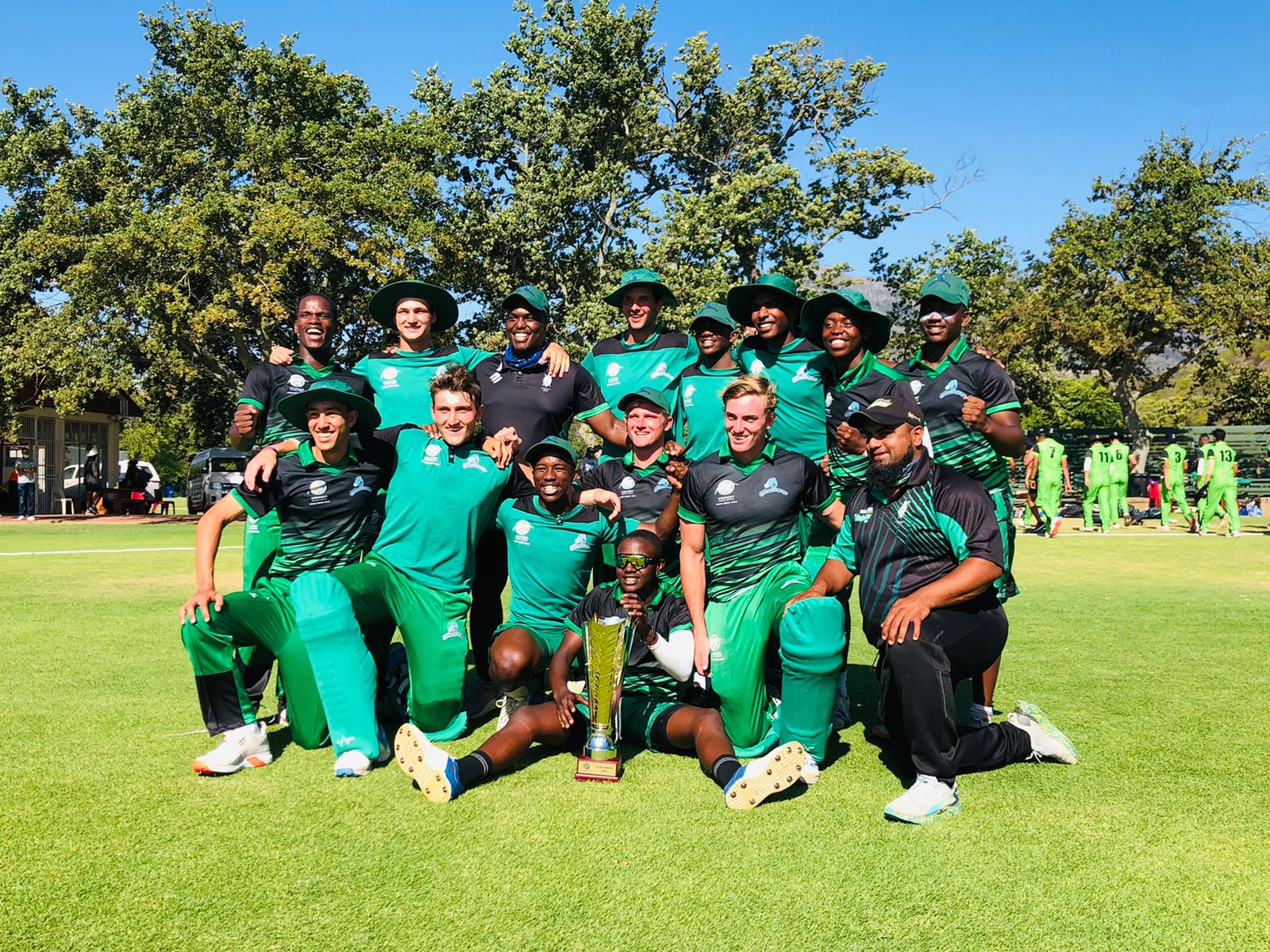
“The road to winning Cubs Week was quite interesting”
By Abhai Shawkar
The 2021/22 South African domestic season has had a tight schedule, especially for youth cricket. But despite the logistical challenges along the way, it’s been a captivating last few weeks, and we’ve had the chance to get clued in on some of the prominent, bolting talents in the country.
Khalipha Cele, the head coach of the Dolphins Cubs, has hailed the progress his team has made over the course of this season. It’s been an eventful ride, but the highlights included bouncing back confidently after a tough loss as well as facing potential challenges in steadfast fashion.
It’s often said that scores are incidental, and what matters the most is putting in the hard yards. There are times when the situation may or may not go your way, and you must be prepared for what’s in store. In essence, that’s been Cele’s mantra for the Dolphins Cubs. They’ve done well to maintain their focus on their game, keep their eyes on the prize, and execute.
“The road to winning Cubs Week was quite interesting,” said Cele to Cricket Fanatics Magazine. “We played the Western Legends (Knights) first up, and in a game we should have won, we lost narrowly. The boys were disappointed but as a coach there were certain moments which proved to me that we have a good chance of winning Cubs Week.
"These moments included having our opener show his mental and technical strength and also our fast bowlers showing up. From that game, we got together and decided as a team that we will take care of the small stuff, starting from warm up, and play free, positive cricket. The result will take care of itself.
“The following games were always going to be tough but it was when we beat the Southern Superstars (Cobras) which were 1st in the log and defending champions, that we realised we are very close to surprising people. We won against Central Gladiators, won against Northern Champions and everyone had a chance to win the Cubs Week on the last day.
“Coastal Conquerors had Eastern Warriors in the final. All we needed was a win. After the Warriors getting 297, it was expected for the team to feel it’s game over. But I knew the Eastern Warriors were 30-40 runs too short.
"The way the wicket quickened up, the way the tail batted, it was too easy, I just knew that our spinners had done enough in the middle period to slow the Warriors down. We chased the total down with 3 overs to spare, winning by 6 wickets. A lovely 111* from Chad Laycock and 46* from the skipper Nathan Trevathan got us over the line.”
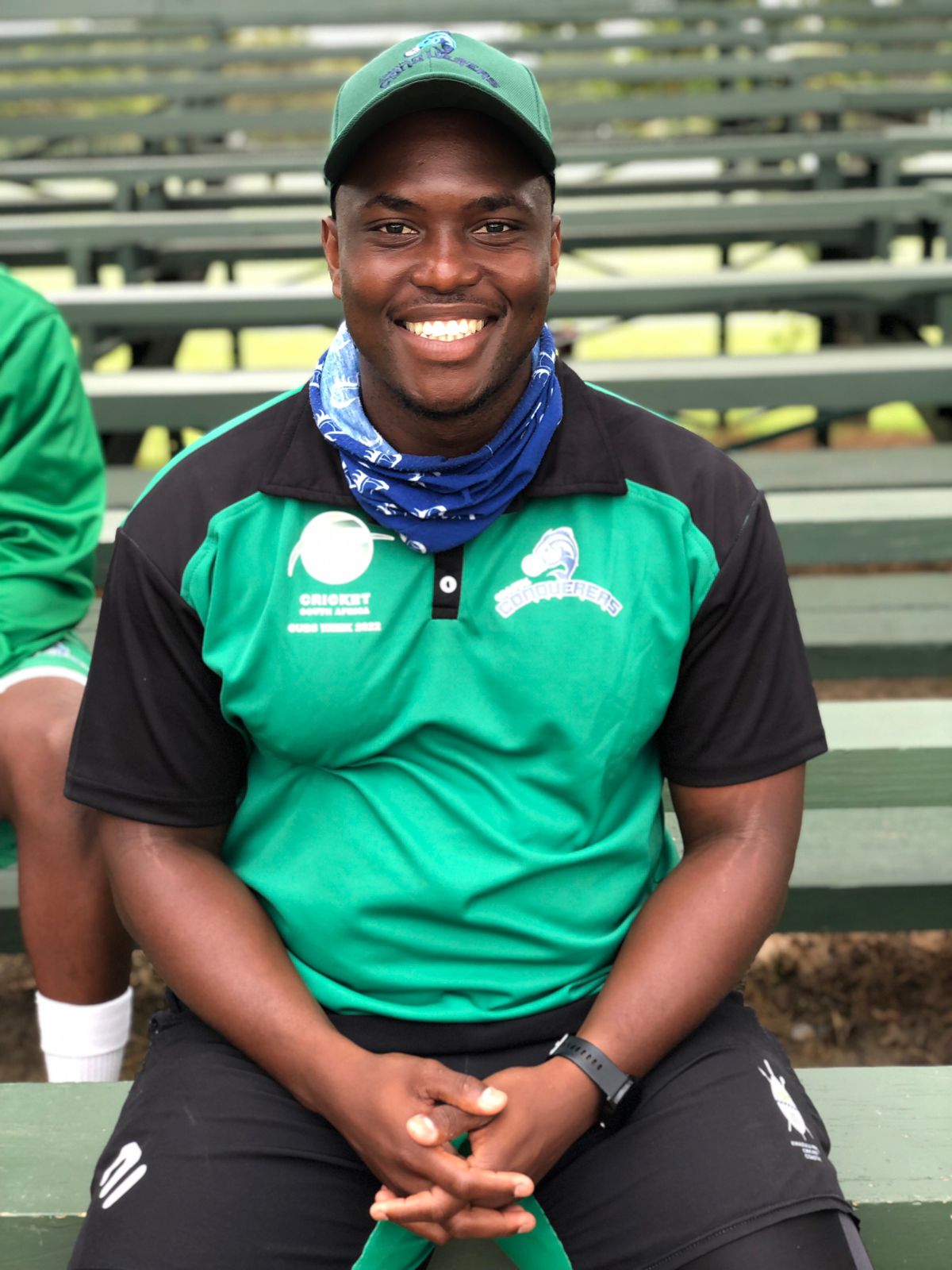
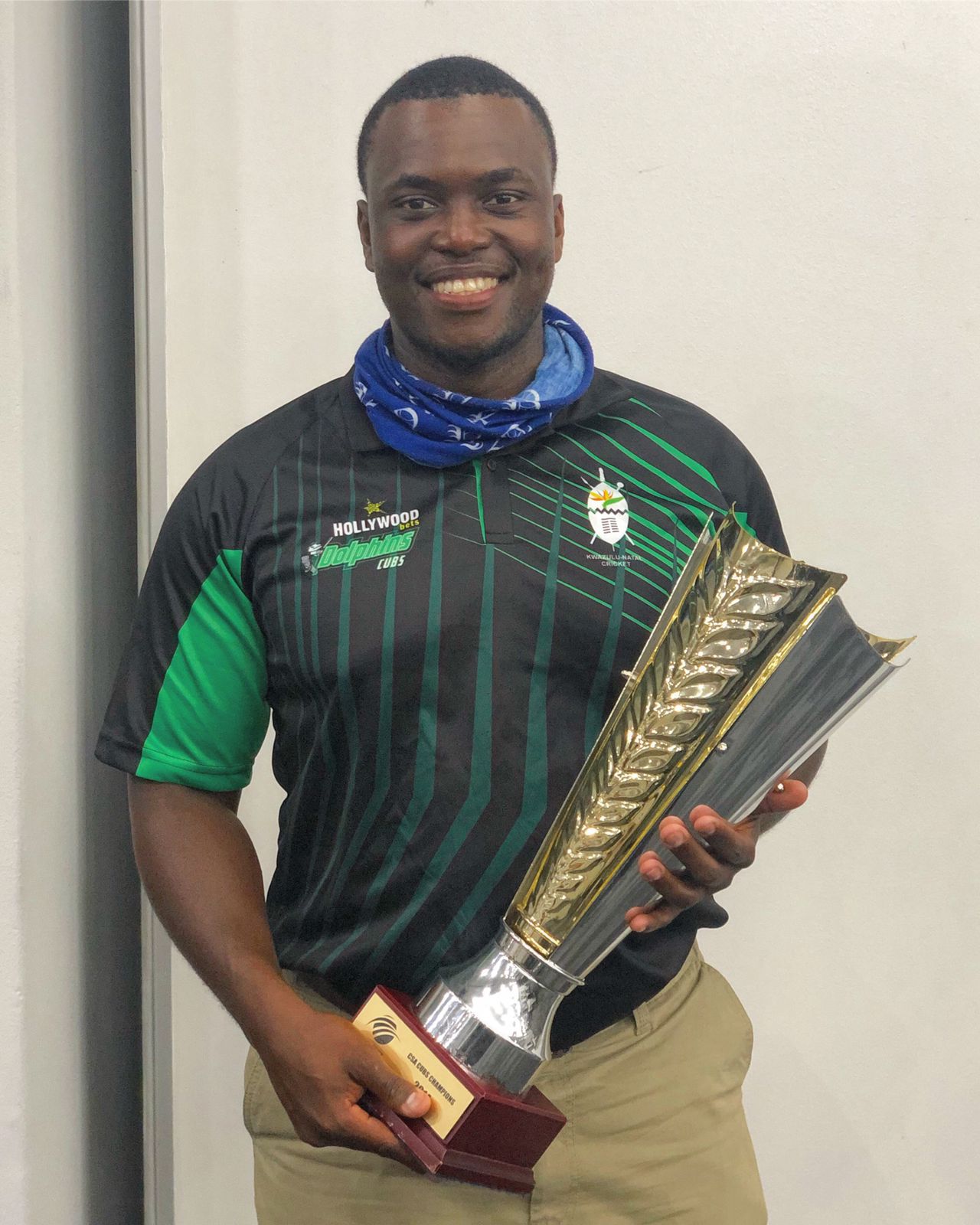
Looking back at the preparation, it was far from easy, since both events were shoehorned in without much breathing space in between. Fortunately, everyone was well-equipped to take on the rather inconvenient scheduling.
Ultimately, the goal was to make sure that the team gelled together well, since unity is a bastion of strength. It was the unity, combined with everyone pulling the weight, that helped drive the Dolphins Cubs towards what would be a memorable victory.
“With the Khaya Majola Week ending on the 22nd and Cubs week being at the beginning of January, there’s basically no time to prepare. But I had a chat with the team and all I asked for was 2 days of their holidays. We made the effort to get together and have practice.
"Even though this may not be enough, but for me as a coach, I just wanted the guys to feel as a unit, especially as this team is made up of two unions who have a history of being very competitive against each other. So I just wanted to create togetherness and at the end that’s what won us Cubs Week, being and playing for each other.”
One aspect in common between Khaya Majola Week and the CSA Cubs Week is the presence of several talented cricketers from all over the country.
But there is one underlying difference between both events - first of all, the Khaya Majola Week has all the best players from the top schools.
On the other hand, the CSA Cubs Week is, markedly, a step up in quality, since it has all the best young cricketers from the franchise setup.
“The CSA Cubs week is very different to the KM Week. This is because the Cubs week is the best players against the best players. You have different unions making 1 team of 13, it’s 13 of the best players of that region(s).
"You then find that there is Cameras, TV and a certain level of professionalism to it. There’s more engagement also between players and coaches/selectors. Everything else is concentrated and results matter. Many have made a name for themselves through the Cubs week where they end up being professional cricketers.”
Cele can most definitely relate to the experiences, since he was a product of the same system, too. He’s played top-flight domestic cricket since 2012 for the KwaZulu-Natal provincial side for nearly eight years, with over 80 matches across all forms of the game.
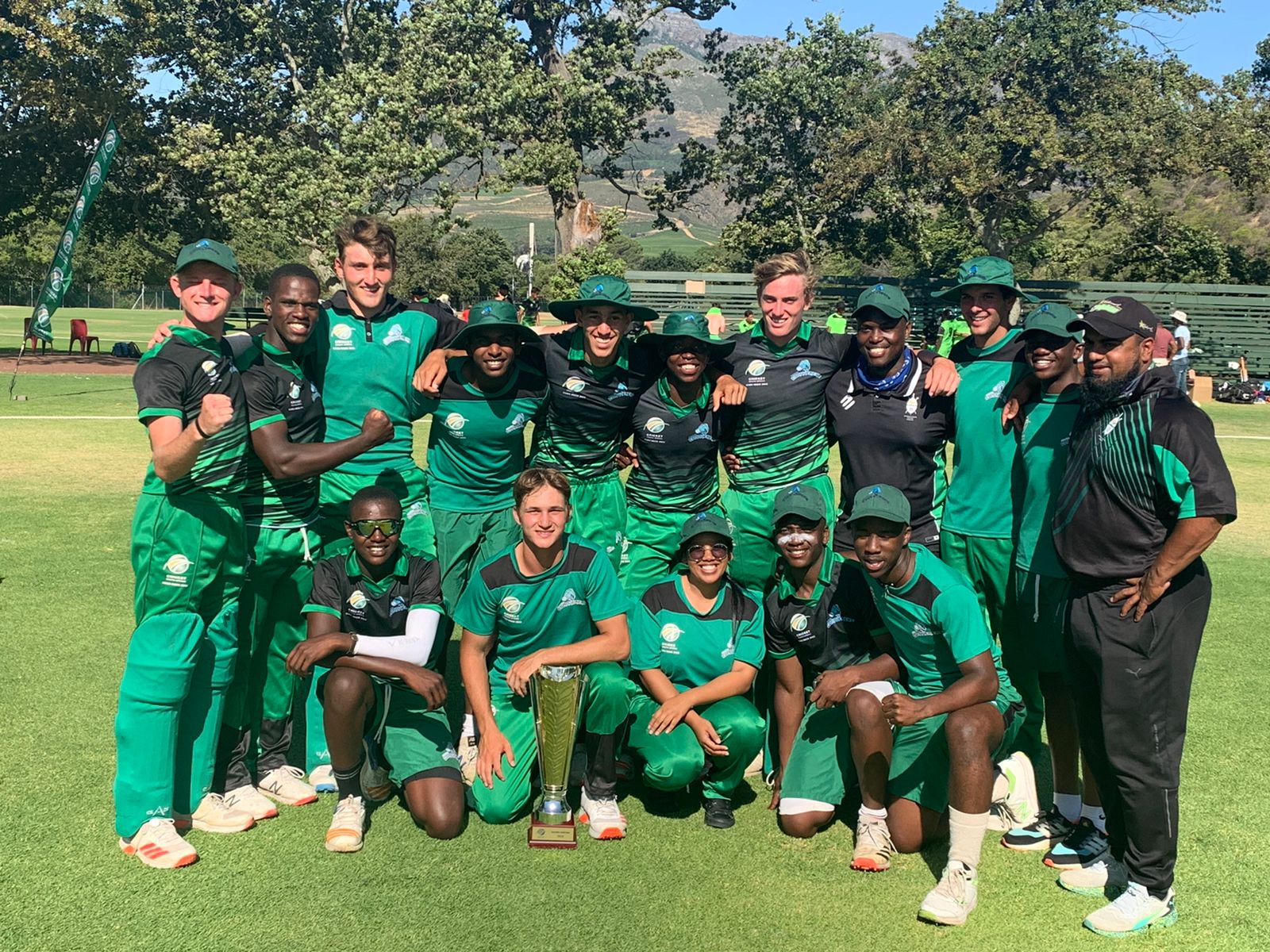
In addition to coaching cricket, he is also a school teacher, too. It further underlines his astute nature and his strong interest to mentor the youngsters. Then again, he emphasizes that he’s learning along as he continues his tenure in all of his positions.
“Mentoring and nurturing you cricketers comes naturally to me but this is also down to experience. Being 29 years old, I have played The KM Week, I played Cubs, I made SA Schools, I’ve captained a professional side and won trophies as a captain. Therefore I know the pressures and also what one needs to do to be successful at these various levels.
"Being a teacher I also focus a lot on the individual, I believe that you can’t treat players the same but you must treat them fairly. I also try to be as approachable as I can be, I fit in “with the boys” but also have the ability to step away and be stern and strong in my leadership. I am still growing in many departments but I am headed in the right direction as a coach, mentor and school teacher.”
Over to the Under-19 World Cup, Cele is animated and passionate about the prospects of the junior Proteas. The squad is the quintessential blend of tall potential and breathtaking ability, and there is plenty of promise among all the players involved.
“The Junior Proteas look to have their bases covered. There’s a lot of talent in that group, and the mixture of skill and combinations is exciting. I am always going to root for my country on winning any competition so that’s what I expect and also pray for. Goodluck to the boys!”
Last, but never the least, Cele is very grateful for the progress that has been made, in spite of the fact that the pandemic has regularly interrupted plans that were in place. At times, the road to success has had plenty of hurdles, but it’s been a test of character and mental toughness on numerous occasions.
“Training and matches has been getting better the longer we are in this pandemic. I think we are all adjusting accordingly. Yes it’s not easy in terms of at times a Covid case can change your team set up, a match can be canceled, and so on. But fortunately, most administrators and players have found ways to maneuver around this pandemic and play cricket.”
Advertisement
Ezra Poole's Online Wicketkeeping Academy
Learn how to Master The Craft of Wicketkeeping Without Having to Hire a Full-Time Personal Coach.
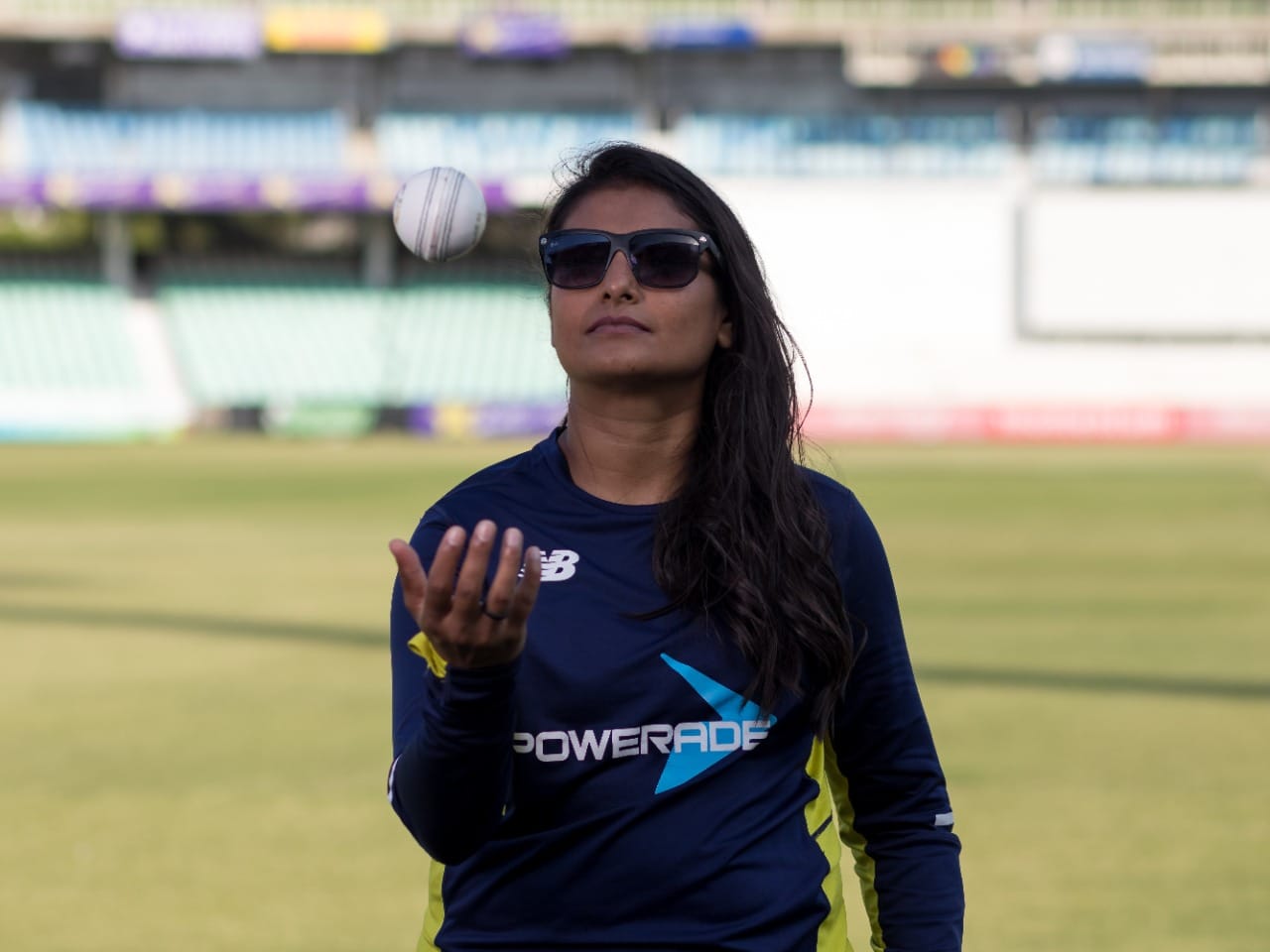
Dinesha Devnarain reflects on U16 and U19 girls weeks
By Emily Norris
Dinesha Devnarain, current Cricket South Africa Girls’ U19 and National Academy Head Coach, shares her thoughts on the CSA U16 and U19 National Women’s weeks that took place at the end of December 2021.
This was the first year that an official U16 National Women’s Week, which is affiliated with Cricket South Africa, took place.
Each union participates in both the U16 and U19 national weeks, and therefore, these tournaments are a massive pipeline that feeds into the country’s U19 structures.
Firstly it's important to understand how the scouting system works for these weeks.
“Each province goes and scouts through schools, clubs, the hubs, RPCs, and then they select their best players that will make the squad. That’s how we get the players that take part in the national week.
"Then just from my point of view, the way that I scout is that I keep tabs with coaches and ask them to send me the names of their best players, the ones that they feel will make it far in the game, and I also attend the U16 and U19 national weeks.
"The combination of these exercises pretty much gives me a good idea of where we’re at in the country with the development of women’s cricket."
Starting at a young age gives you an advantage as a cricketer and there are systems in place to ensure that the grassroots level remains active.
It's essential to have a good programme to get people playing from a young age, just for the love of the game.
“Under the Cricket South Africa banner, we have the KFC Mini Cricket Programme, which is a massive talent ID programme.
"Many girls start at the KFC Mini Cricket Festivals. From there they transition into high school, or they transition into hardball cricket (that’s your U13 school leagues).
"Not all provinces have U13 girls’ cricket, so there are a lot of girls that I know that play for the boys, which is cool."
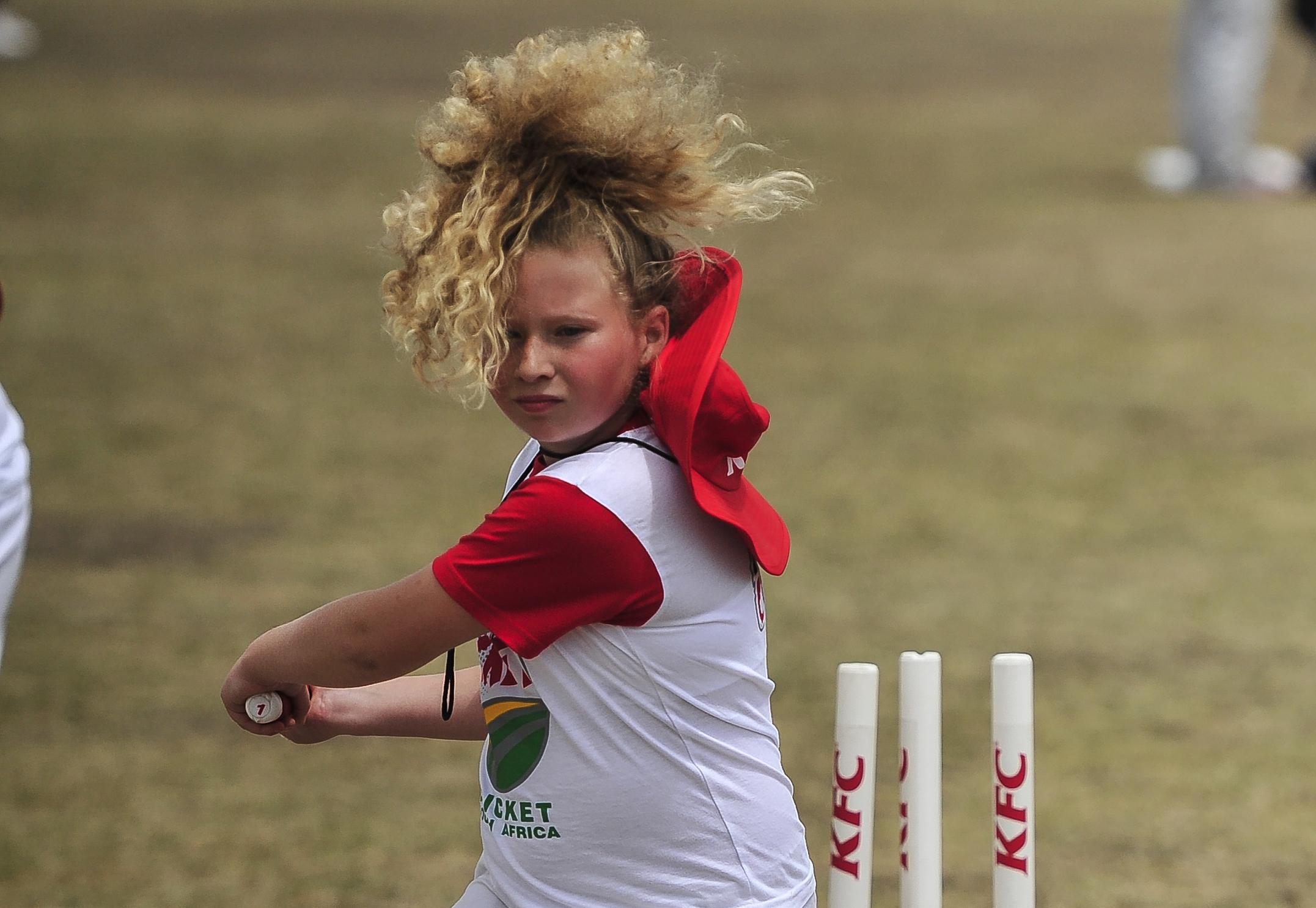
After having a good start and being introduced to the game, maintaining that development and making sure that talent is nurtured is crucial. The age group weeks helps do exactly that by allowing players to test their talent against the best that the country has to offer.
“We have our U16 structure, and then our U19s, which gives a good consistency of players. If we identify a player at the KFC level, we should in 5-6 years track her to the U19 level, and then from there, she has a chance to make the National Academy squad, the SA Emerging squad, her Provincial senior women’s team, and eventually the National team – which is great.
"The inclusion of the U16 framework coaches and having a national week for that is massive for the programme because what I found in the past is that girls will play good U13 cricket, but once they transition into high school, you lose them in the system in a sense.
"I’m really glad that the U16s have a structure and there’s a pipeline from U16s to U19s, and then into your senior provincial team. Then hopefully through the ranks, you get into the Momentum Proteas side.
"What I’ve seen at the U16 week is that there is talent there. It was the inaugural U16 week from Cricket South Africa. We’ve got a U16 framework coach in each province, which is brilliant. We’ve got a full-time coach working on U16 girls.
"I think we’ve got to take the pandemic into account, we’ve also got to take into account that this is some of these coaches’ first time working with girls, and then on top of that, there’s not that many experienced coaches who have worked at the U16 level. All of this plays a factor in the product that you see out there in the field.
"I was a little bit disappointed in terms of extras and the batting application, but I think that’s something that we struggle with in this country as a whole, regardless of the age group.
"What I enjoyed was the bowling. There’s good pace behind the ball. It’s just about finding these rough diamonds, with the U16s. The fact that we can identify players at that level and put in the processes like a PDP (that’s your Personal Development Plan) by putting them through interventions, is a good thing.
"If we identify a player and get her the proper coaching and equipment, then we can get players better prepared for the future. It’s all about identifying these areas of concern now.
"The U16 week was still very new, so I think we’ve got to let that roll out. There must be a few blueprints and benchmarks set from my side to the players so that the coaches understand what’s expected from the girls at that level.
"The U19 week was also good. From Day 3 there was very good cricket. The first 2 days were a bit slow. I felt that the girls were undercooked and underprepared a bit.
"The pandemic plays a big role in that, but the pandemic is not going to go anywhere anytime soon, so we’ve got to find solutions as to how we’re going to prepare the girls better when they get to a national week.
"Two provinces stood out to me and that’s Western Province and Gauteng. I thought they were outstanding at the U19 week. They were prepared well, and it showed. They were in the final. There’s no surprise there, it was a good final as well.
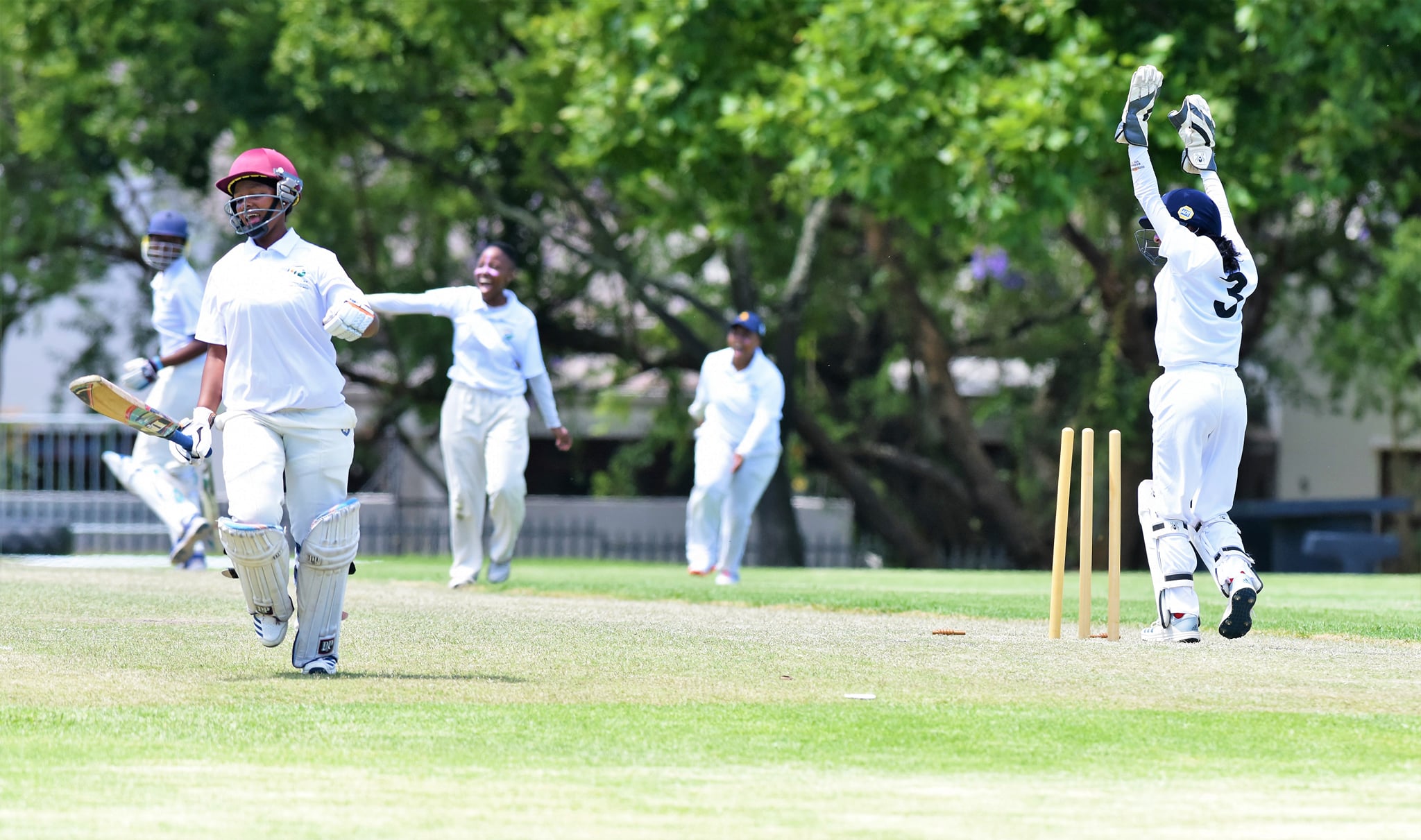
Cricket Boland/Facebook
"There are a lot of positives that we can take out, but it’s more coming from the bowling front. Fielding is something that we’re going to have to look at and address, and the girls must learn how to apply themselves when it comes to batting.
"Despite this, there’s a lot of talent coming through. If I must be honest, there are girls with absolute raw talent. You can see that they haven’t been worked on from a technical point of view, but they do the job, and I think that’s a great skill to have. For example, raw pace. It’s good on the eye because you don’t see that in girls’ cricket.
"Now we also have girls that are leg spinners at U16 level, that’s crazy, that was unheard of before. So, the game is growing, and you can see that players are specialising a lot earlier. If I think back to when I played, in one game you’re a batter, bowler, and keeper. You’re everything in one. But now it’s nice to see that the girls are reading up about the game, they’re watching the game, and they’re specialising early.
"It just shows that if you do work on a certain player and you devout a little bit more time to a player that’s above the rest in the group, then we can produce Proteas at a much earlier age.
"The attitude of the girls is also something that I enjoyed – and I know I’m talking away from the game here – but I enjoyed the politeness and humility [that I received when] walking past girls. They’re respectful. I think that’s important and sometimes it gets overlooked.
"Sometimes we can get caught up just talking about skill all the time, so that was something nice to see – the respect for the game and for the people that support the game. Those are the two things that impressed me the most.
"There were players that caught my eye. What I looked for were girls who have the talent and want to play. You can see by their body language, how they carry themselves and how they read the game.
"That’s what I was looking at. There were a few players with great technique, and they had great skill, so obviously those are the players you would fast track more because you don’t have to do so many foundation skills with them.
"There were a few players that cleared the boundary rope, a few players with impressive bowling techniques and bowled with good gas, so that’s exciting for the future and I’m excited to work with these girls very soon."
Despite the pandemic, Devnarain was grateful that both weeks could still go ahead, and that there is the talent to work with heading into the 2023 World Cup.
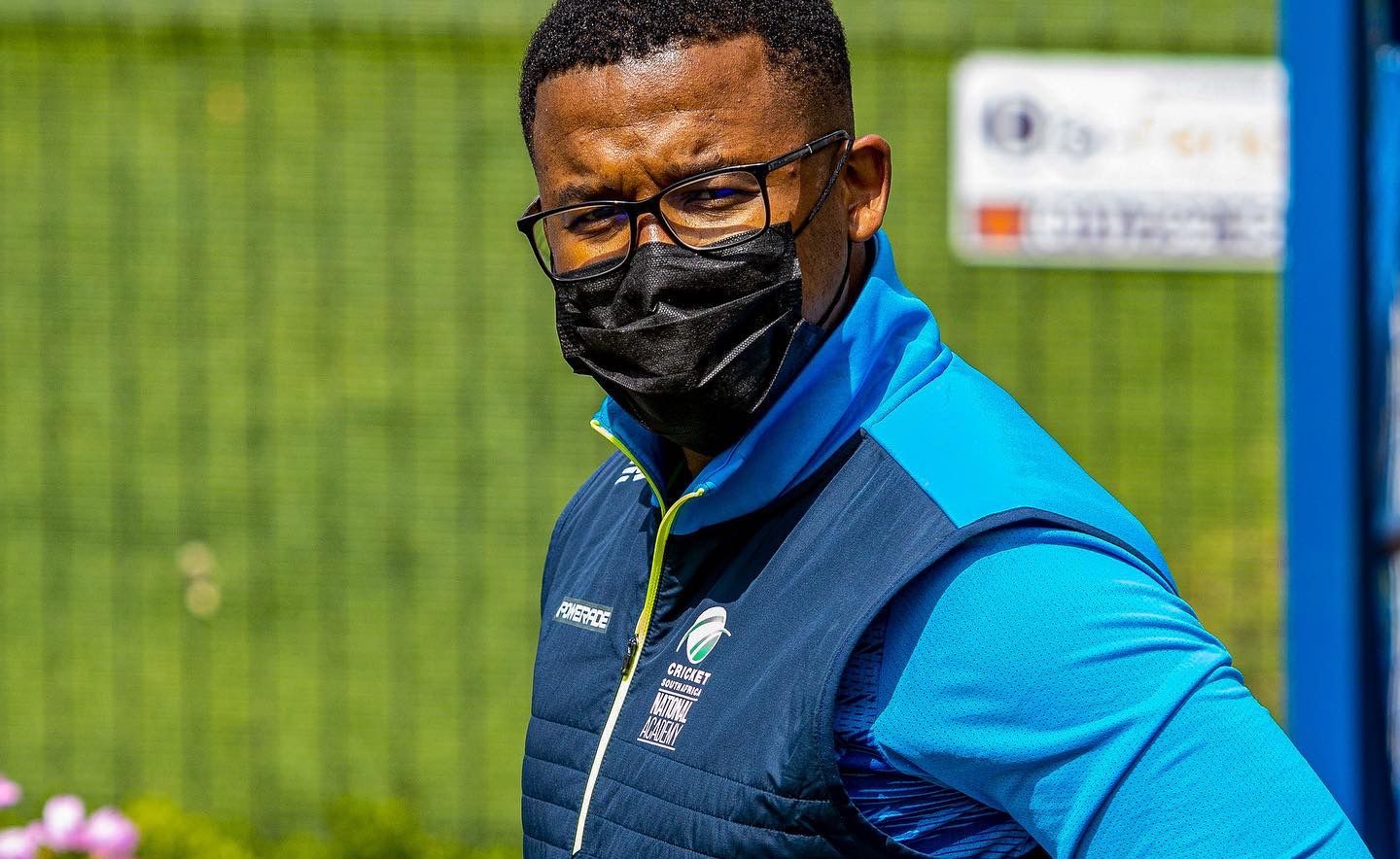
Q&A: Lita Gqirana
By The Twins
How does Khaya Majola Week and Cubs Week prepare our young talent for the future?
These two competitions are the pinnacle of youth cricket in Cricket South Africa and the country. A lot of these youngsters work their butts off from U11 and U13 level up to the U19 level, where they’re up against the best of the best from around the country.
With regards to preparing them for the future, you’d be facing the best of the best and nothing prepares you better than facing quality opposition.
So, the fact that throughout the year, each province, each union has various trials, various scouting levels where they take players from various schools etc. and the HUBS RPC's that they have, by the end of the year it is the best of the best that is left and it’s the players that have been identified to be part of the CSA pipeline.
Hopefully they will be able to then create a pathway for themselves into professional cricket and to a point where they represent their union and eventually SA, starting from national academy up to the Proteas men and Proteas women.
What has been your experience working at the Weeks in the past?
I’ve been very fortunate and blessed to have worked in quite a few of them in the past. I’m very lucky as well seeing young talent, first seeing them at that young age and then they go on to play provincial cricket and even for SA as well. It is an honour for me.
It just shows the kind of work that is being put in behind the scenes, the kind of work that most fans don’t really pick up on until the player is representing SA, a union or franchise. For me, seeing that has always been an eye opener. When I get to the Weeks, I am a huge cricket fan. I’m not going to say I knew a whole lot about how development structures worked before coming into CSA.
When I go to these events, I’m all about asking questions. It’s just amazing because it’s almost like a finishing school, if I can put it that way. Particularly for youngsters that are in the matric year. This is the last tournament they play before they move on to the real world. It’s the do or die when you get to provincial level even semi-provincial level.
Most of the time, players who perform at these Weeks and these tournaments around the country then go on to make a career out of themselves. But also, it’s not the be all and end all as well because there’s plenty of cases where a kid never played Khaya Majola Week, never played Cubs Week but ends up creating a career for themselves or representing SA as well.
So, it’s an amazing experience to be there and it shows the hard work that is put in by all involved with credit to Niels Momberg, CSA youth and tertiary cricket manager, making sure that everything that’s done at the unions, scouting and identification of players is done properly.
The interventions are very important at this level because you get a very talented kid, but he/she has certain things off the field that they need help with, they focus on these things to lessen the burden on these youngsters so that they can focus on their cricket. Huge credit goes to CSA for that.
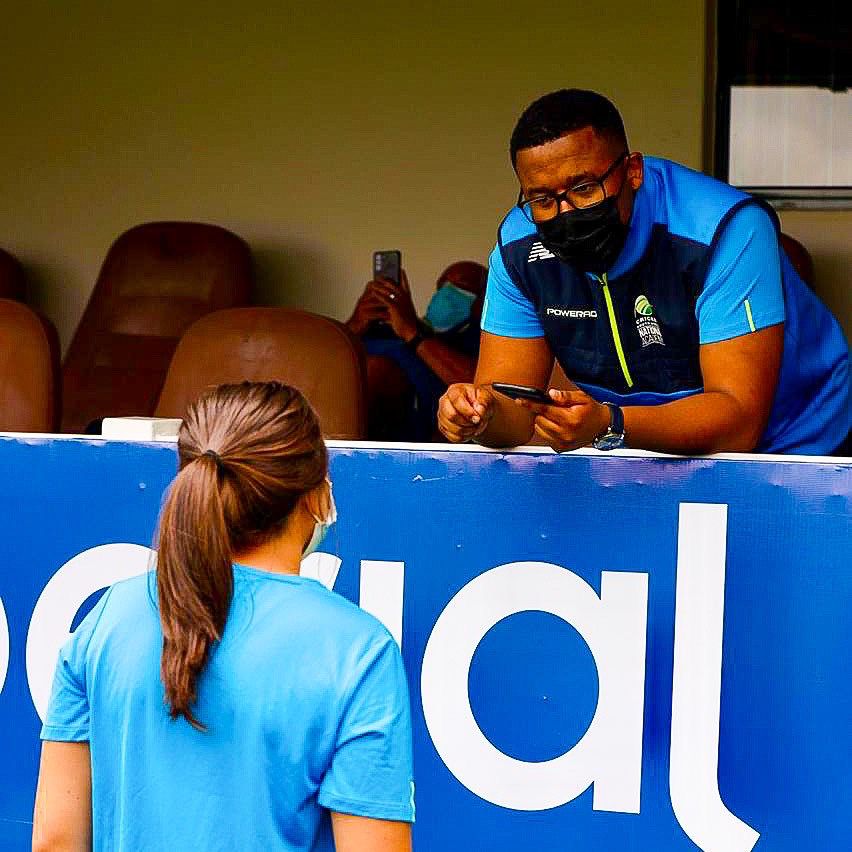
Who are some of the best players you have seen play at the Weeks in the past who have gone on to have successful careers?
I’ve only started working at CSA as an intern since December 2016, so I haven’t seen youngsters that have gone on from the Weeks to play for SA yet, but names that come to mind are, in recent years that I’ve seen, the likes of Bryce Parsons at the Dolphins, Tiaan van Vuuren at the Warriors (was part of the Eastern Province side that won, with Luke Beaufort, the KM Week in 2019. It was the first time since 2003 that EP have won it unofficially).
These players have gone on to play more than 10 first-class games already and creating a career for themselves. I predict that either or both will represent SA at various levels in the future. There’s a couple more. I remember Aiden Markram during his years, and he was one of the youngsters that didn’t play KM (I stand to be corrected), he represented Northerns in his final year at school. He did end up to captain the U19 team the next year and won the 2014 U19 World Cup.
Like I said, it’s not the be all and end all, there are always opportunities for people who work hard and commit to their game to make it beyond the KM and Cubs level.
What is the difference between the Khaya Majola Week and Cubs Week?
This is an interesting one, because even I had to do some research to find out what the difference is in the past.
Khaya Majola Week is a provincial tournament which involves 15 provincial teams, WP, SWD, EP, Border, Gauteng, Northerns etc. which have their trials throughout the year. They select their teams, and they send them to a Week to compete where the best of the best play against each other.
Cubs Week is even more elite. Besides this year, Cubs Week is normally the last tournament of the year for school-boy cricket before they select the U19 side, they would go on tours straight after the camp as well as to prepare for the upcoming World Cup.
This year, the U19 squad had to be announced a bit earlier, which was different. They departed for the West Indies. Normally, Cubs Week was a franchise youth tournament under the previous CSA structure. It was the 6 franchises (Cobras, Lions, Dolphins, etc.).
Now, it is still 6 teams, but they’ve given them their own unique names and unique teams; the Dolphins are now the Coastal Conquerors, Gauteng are Central Gladiators etc.
Basically, KM is provincial, and Cubs is franchise. The Coastal Conquerors who won the 2022 Cubs Week are made up of the best from KZN coastal and KZN inland teams, they were brought together to represent the "Dolphins", if I can put it that way. It’s pretty much run the same way; they play 4 or 5 games during the week. KM has unofficial champions while in Cubs Week there is an official champion, they have a log of the matches you win etc.

What was your time like when you worked with the U19 team? Challenges, learning curves, and what did you enjoy about it?
Under 19 cricket was awesome. I was lucky enough to catch former head coach Lawrence Mahatlane at the end of his tenure. I learnt a lot from that man, he taught me, and he has a long broadcast history as well. He taught me, not just about cricket but broadcasting elements and interview elements etc. and walking into that job I was very inexperienced.
It was a matter of learning on the job, and I was fortunate enough to get the opportunity from CSA. I worked hard so they gave me the opportunity. So, I really enjoyed it and learned a lot. Dealing with youngsters is not easy because a lot of them are coming into a new environment, a lot of them are used to being in the school environment which is a bit safer.
Now, all of a sudden, they walk into a national set up with players that they don’t normally play with. In terms of challenges, that was one of the challenges on the field and off the field like media stuff. Because at the end of the day you’ve got 16 or 17 youngsters who are familiar with each other but they’re not a team and it’s up to management to create and foster the team environment and team culture.
In terms of media work, it was awesome because I could teach these youngsters about media, the importance of social media, the importance of building a brand… that was the awesome part about it because I also learned a lot. You can learn stuff at school, but when you are in the practical world, you’re talking to athletes.
So, you need to tailor it specifically to the South African context and in the youngster’s context. Just to help them understand the importance when they are off the field, they need to carry themselves in a certain way and on the field all eyes are on them, so they also need to carry themselves in a certain way.
I started with the SA U19s when they went on an England tour in 2018, I was working from home at that time, but I had my first camp with them soon after that. I was with them for a couple of years up until the 2020 U19 World Cup hosted in SA which was an amazing opportunity.
It’s an experience I will cherish forever. Right now, I’m still working with the U19 virtually because I enjoy it so much. I don’t mind doing the extra work.
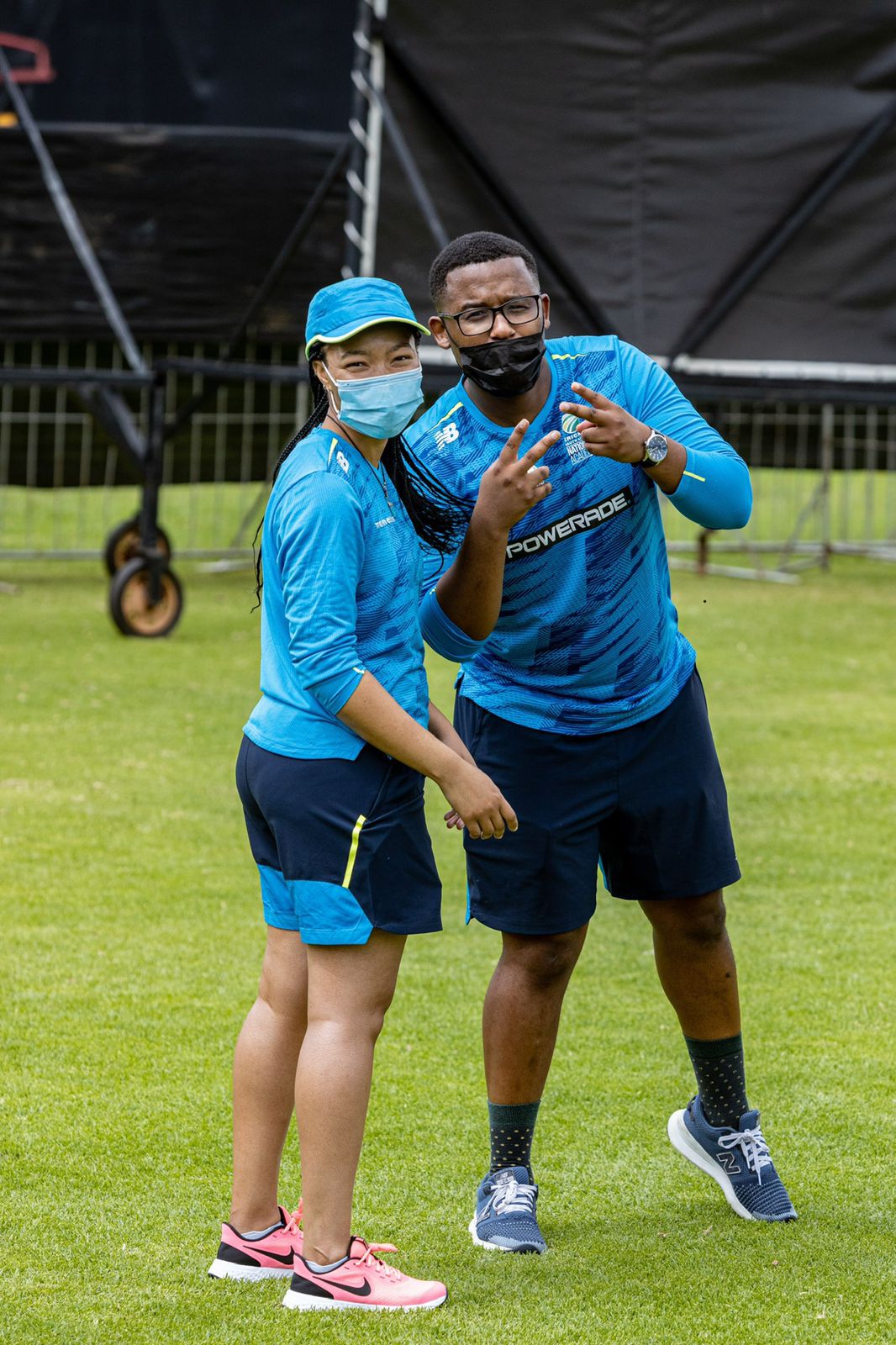
How have you developed since then to your role now? How have you improved?
It’s slightly different now in my new role as the Momentum Proteas Media Manager, I’m dealing with experienced pros, people who are not only older than me by age, but also their experience, they’ve been there and done it compared to what I’ve done. I haven’t been to a senior World Cup yet; we’re heading into one now in New Zealand which is different from the U19 World Cup. I’m going to have to learn a few more things, how things work which I have already started doing. It’s been amazing.
It’s all about growth, I’m always keen to learn. I always ask questions whether they’re dumb or not and I feel that’s how you learn best. Absorb all the information from all those around you including our head coach, Hilton Moreeng. I don’t know if it’s pure luck, in SA we’re just blessed with amazing coaches. He’s been spot on since day one and I’ve worked with him and I’ve worked with the team sporadically in the past, stepping in when I’m needed.
But now, as an official media manager, the team has been amazing and there is an understanding that things have to be done in a certain way. I’m looking forward to it, West Indies series coming up, the first actual series I’m going to be involved with the ladies permanently, so I’m excited.
There’s going to be a bigger coverage here at home, it’s on SABC and Supersport, side interviews, pre- and post-match conferences. It’s all exciting, I’m looking forward to it and I know it’s going to be demanding, but at the end of the day if I put in the hard work, hopefully everything will go well.
What is your motto in life?
I’ve never thought of it as a motto in life, but I have this tagline on Instagram when I first started using it and it went over to my WhatsApp. I’ve always carried it with me because it’s just the personality that I have, but my motto is Be Happy. I’m not going to say I’m the happiest person in the world, but I always make sure that people will not see or pick up on my unhappiness. I want to make sure that when you see me you will smile because I’m not going to give you my problems. I laugh a lot, make jokes, I think I’m funny but sometimes people tell me I’m not haha, it’s just about being happy and enjoying life at the end of the day.
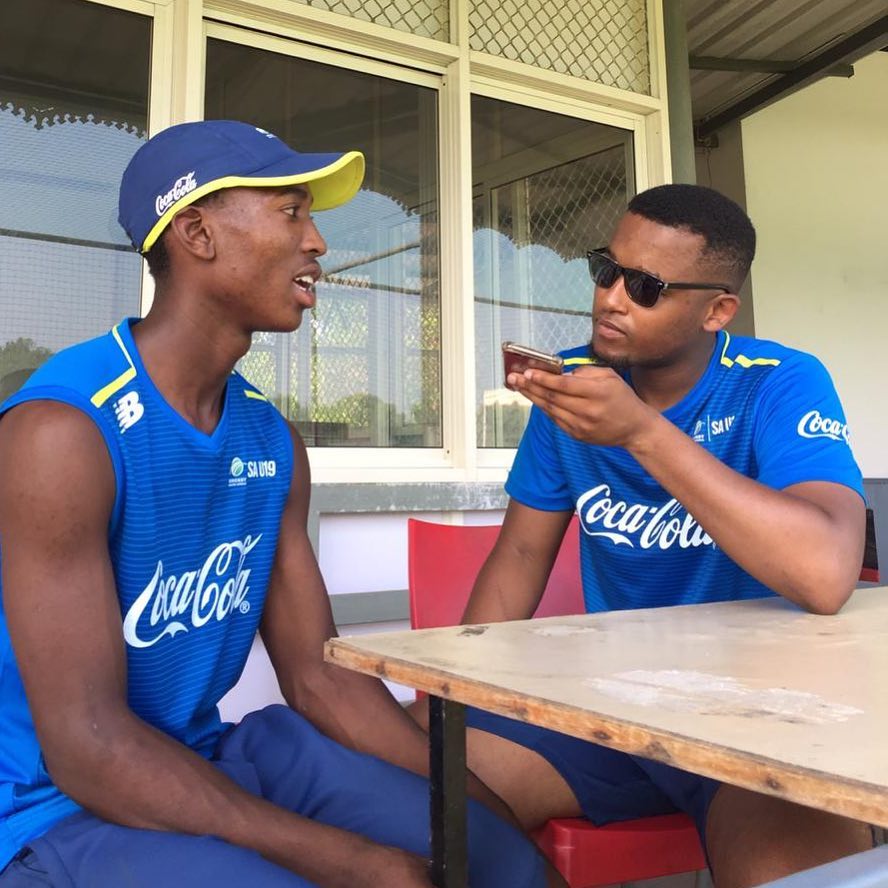
How did you come to be the media manager for CSA?
Luck! I’m joking. In 2016 I was finishing my Communications degree at UJ. I’ve always been a cricket fan and at high school I played cricket a bit, not at any serious level, C-team actually and I was at Pretoria Boys’ High. I played C-team cricket up until Gr 10 and then my history teacher and U16 A-team coach who I was very close with said: “Listen, don’t you want to come and score for me?”
I realised I had to sacrifice a lot of my Saturdays, but I’m a sports junkie so I enjoyed everything about it, just seeing players at a different level than me, because I was not at that level at all.
I started scoring up until Gr 12, finished 3 years of scoring, I got a blazer and full colours at school for being a scorer and I was one of the first at that school to get full colours for scoring. That was amazing. Funny enough, Aiden Markram and Corbin Bosch were in Gr 12 and Aiden was the captain and I was the first team scorer. So, that’s how I got into cricket.
In varsity I did nothing relating to cricket, but in 2016 at the end of my degree year I saw an opportunity at CSA to apply for an internship, I was a CSA intern placed at the Multiply Titans for 6 months.
I was fortunate enough with the former CSA media manager, Altaaf Kazi, and he asked: “What are you up to now?” and I said my contract just finished with the Titans, I’m looking for work, and he’s like: “Would you be keen on being an intern again?” and I was like “Listen, obviously!” because he was looking for someone in Cape Town.
Then, 2 months later I started at the Cobras as an intern there. I was fortunate enough to work with David Brooke, awesome gentleman, I was his intern for about 6-8 months. Then CSA came calling again and asked if I wanted to work up in Jo’burg again and because I stayed in Pretoria it was a real step up from working at the union to working at the head office of CSA, which I accepted.
Then I worked at an agency that was looking for someone specifically in cricket and I ended up handling development properties for CSA and that’s how I went to U13/U15/U18/U19 Weeks, girls and boys, traveling around SA was amazing doing the CSA media work for the YouTube page as well, videos and doing media work writing press releases, match reports etc. that’s how I sharpened my tools at that level.
It was a matter of trying to bring life and attention to development cricket in SA, and that was my passion. Simultaneously, I was handed the CSA U19 media manager role because at that point Sipokazi was solely focusing on the Women while I was brought in to take over the U19 level
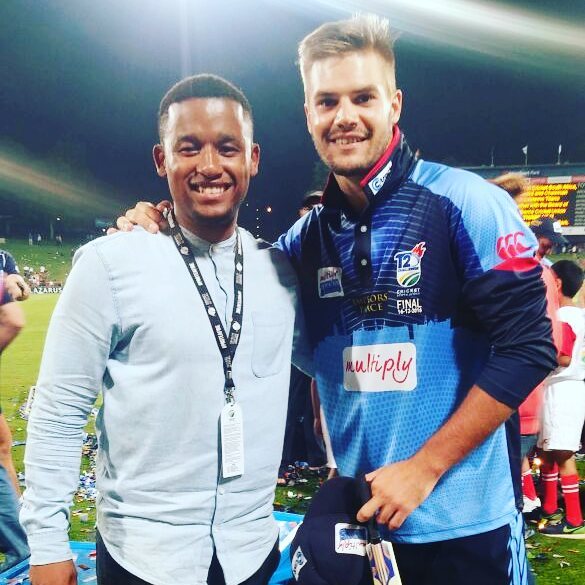
Describe your typical workday
It involves a laptop, it involves Wi-Fi and it involves a lot of typing. I never wore glasses until 2018 and at that point I was fully working in cricket. I face the laptop all day, my eyes became a bit worse. If it’s preparing for a Week, a match or upcoming camp, writing media plans, previews, press releases, conducting interviews, at the end of the day each level is unique in its own way.
The Men’s, the Women’s, the Youth are all unique in their own way and speaking to the people on the operations side is very important because that’s how you make sure that it comes out in the articles as well.
Conduct interviews over voicenote or actual call and recording on my laptop, meetings, and planning for Women’s upcoming camps, I need to make sure that the squad releases are ready on time.
On matchdays, you come to the stadium, make sure the team sheets are out in time for the media. Back in the day I used to do the social media as well (Instagram, Twitter, and Facebook for CSA) before an agency took over. I used to take photos, make videos, and post them online.
But I’ll tell you this, there is no typical day as a media manager. Everyday is different, it’s a matter of doing your best and making sure that what you need to do is handled.
What do you enjoy most about your job?
Being around players, being involved and seeing athletes behind the scenes and how they end up producing what they produce on the field. Second favourite part of my job is the traveling, I don’t take pictures a lot, but I love going to different places experiencing different people and also just watching cricket. For me, the best days are match days. I can watch cricket and do my work. If this is not what being blessed means, then I’m not sure what it is, because I’m in such a fortunate position.
I’ve always been a huge sports fan, my nickname as a youngster was ‘Robert Marawa’ because I used to argue with everyone about everything when it came to sports. My mom even gave up at some point in trying to make me switch off Supersport channels because that’s all I watched, even today.
I know a lot of people would want to be where I am, so I don’t take it for granted. Every day I make sure I do my best to help everyone that I can with a smile. Because at the end of the day, this could end just like that so I must enjoy it and make the most of it.
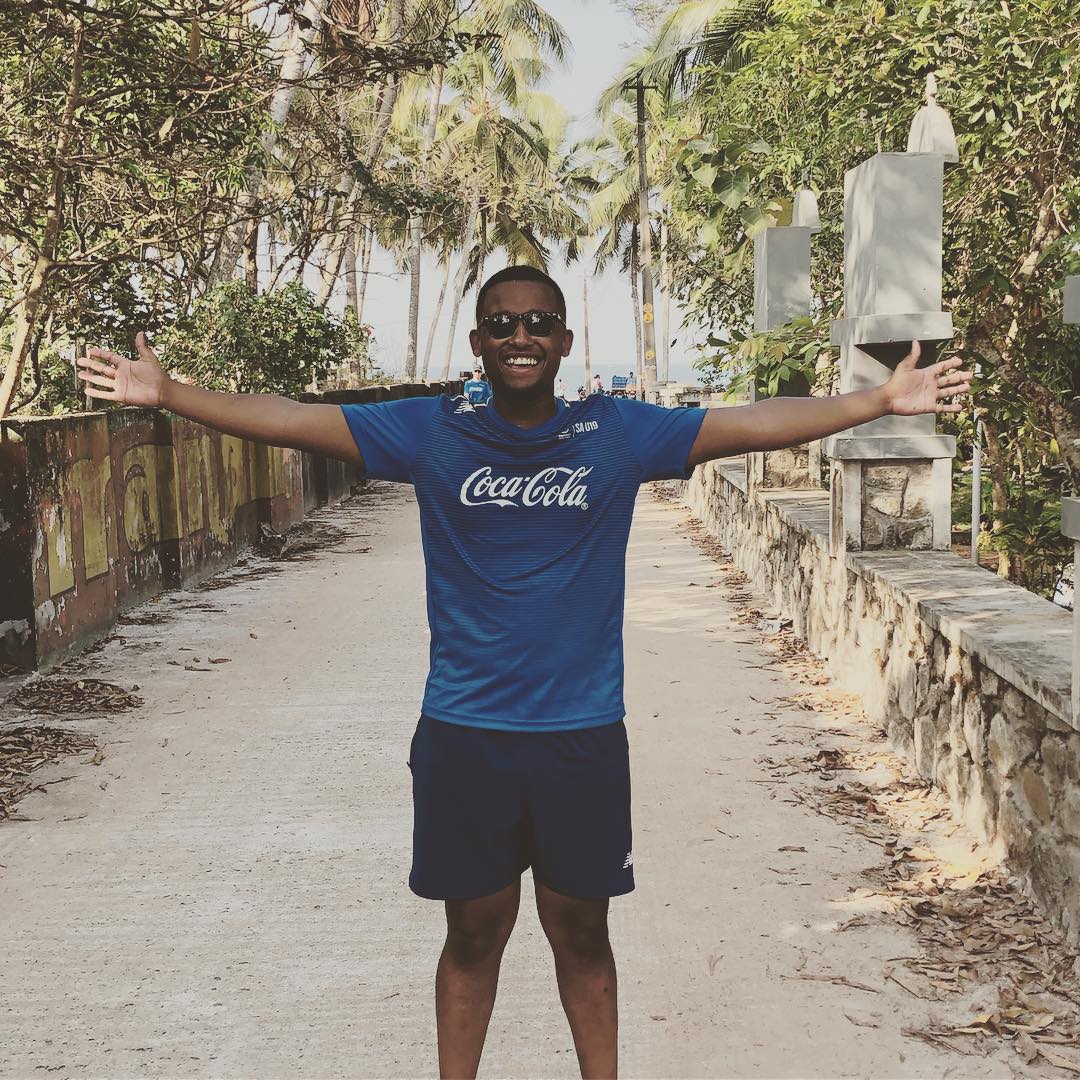
Favourite/least favourite food?
I am an addict when it comes to pizza. Growing up I didn’t have that much access to pizza, my mom wouldn’t allow me to eat that much fast food. Now as a grown-up with my own money, pizza has everything you need in a meal, and I love it. For least favourite food, I’m not a picky person, but I’m not a fan of rich cooked meals, those are for Sundays. I prefer finger snacks, wraps etc.
Favourite football team?
I’m a huge Chelsea fan. Frank Lampard was my football idol growing up because the first time I got a PlayStation in 2003 as an 8-year-old and I got Pro Evolution Soccer 4 and I struggled to score goals. Chelsea was a team that I just picked, and I scored my first goal in the game with Frank Lampard. Also, because they were the best team at the time under José Mourinho and as a youngster, I wanted to support the best team and that’s how I became a Chelsea fan.
What was your experience handling the media accreditation, focusing on the fact that it was your first test series in that role?
It’s tough, it’s not one of the most enjoyable jobs out there, but at the end of the day I am in a fortunate position and I’m in no business looking down on certain roles.
For me, it was a matter of taking it on, going all in and doing my best with a smile. I’m serving the media, that’s my main aim, but also staying within the rules because it is very important. Particularly now with COVID, it has made everything very difficult.
That was also the most challenging part of the job, trying to convey the rules to the media in a way that they can understand. We had to put in strict criteria because at the end of the day we are struggling with capacity due to COVID restrictions.
The India series was quite a huge one to start with, it was a baptism of fire there. We live in a different world now and we all have to adapt. The Momentum Proteas are my priority and secondary is the media manager role.
Offside Maidens
Daily Show | Let's talk about it
Video Playlist
The Podcast Live Show:
Exclusive Interviews
Crossword Puzzle
Meet the SA Schools Team!
ISSUE 18: Crossword Answers
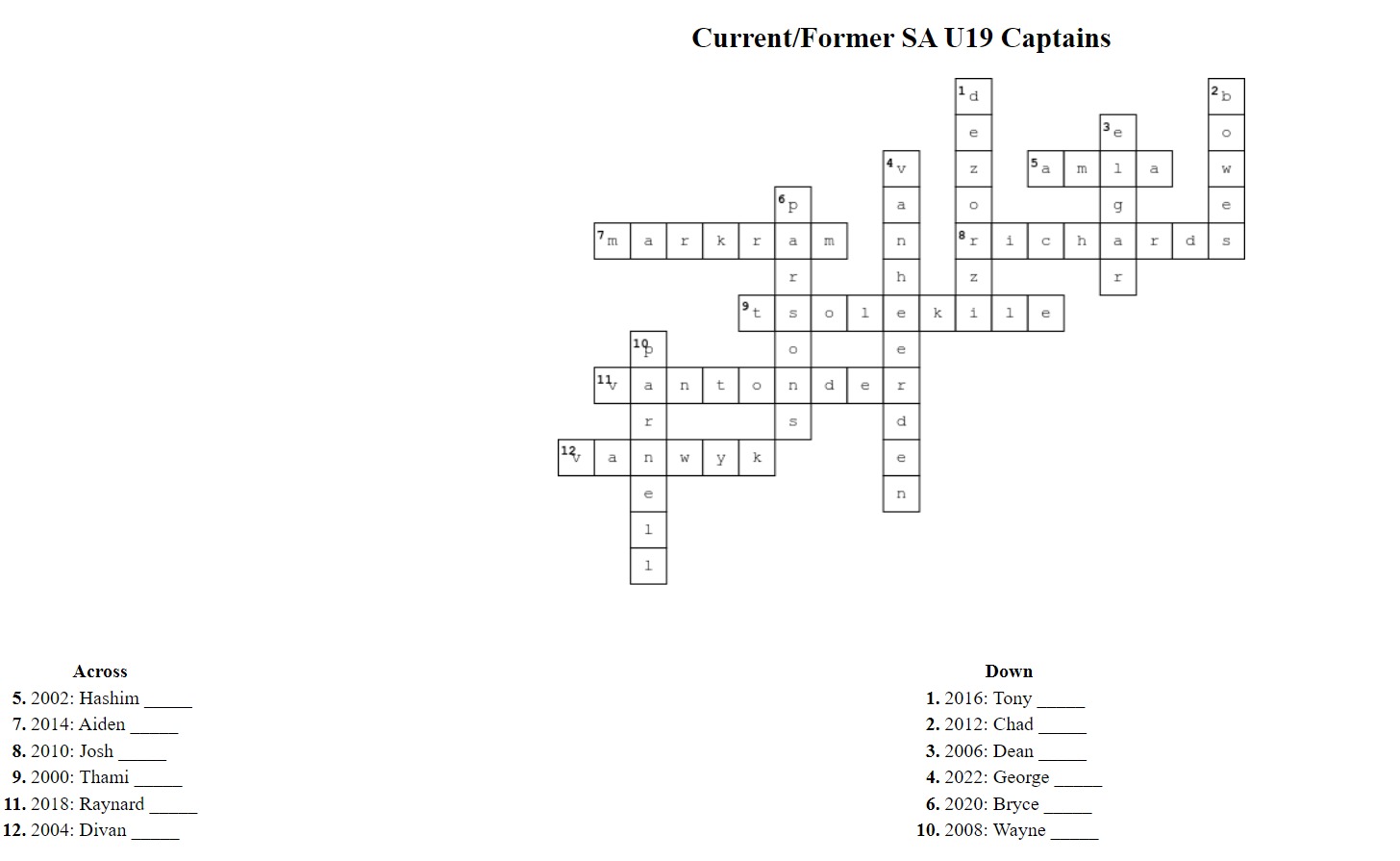

Magazine info
Editorial Director
Khalid Mohidin
IT and Technical Director
Faizel Mohidin
Contributors
Abhai Sawkar
Aditya Mehta
Emily Norris
Janine October
Jessica October
Khalid Mohidin
Licia Woods
Marc Jacobson
Tara-Lee Essack
Graphics
Khalid Mohidin (Cover and Graphics)
Mohammed Hoosain (CFM logo)
Images
CSA/Gallo (Front Cover)
BackpagePix
Supplied
Twitter
Facebook
Video Binge List:
On Lockdown Series
The Podcast Show
Legends with Ravi
Daily Show